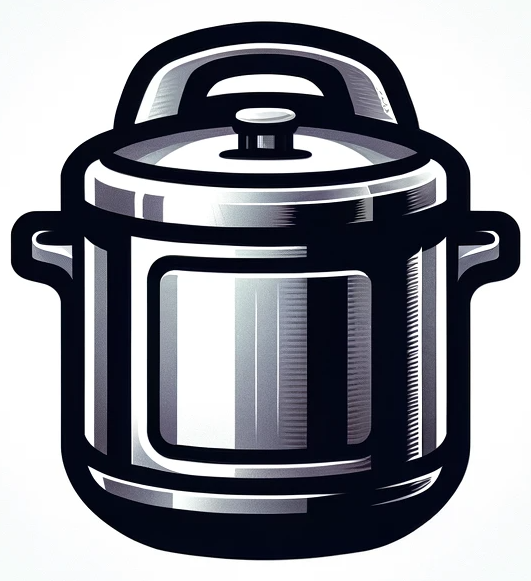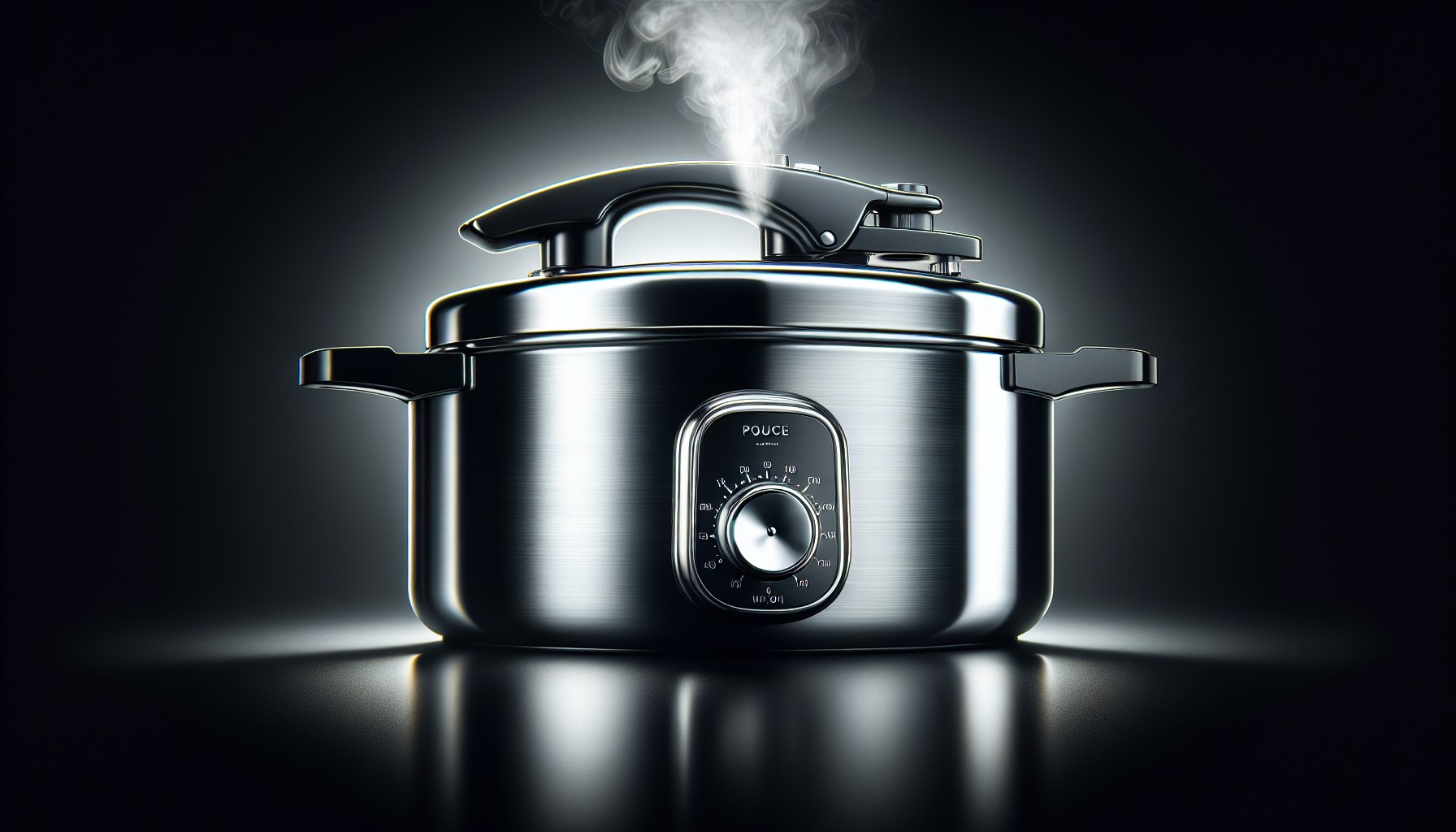Have you ever wondered if pressure cookers are safe to cook in? This article explores the safety of using pressure cookers for cooking and dispels any misconceptions or concerns you may have about them. In today’s fast-paced world, pressure cookers have become increasingly popular due to their ability to cook meals quickly and retain nutritional value. However, some people worry about the potential risks associated with using these cookers. Rest assured, this article will provide you with all the information you need to know to ensure safe and worry-free cooking with pressure cookers.
CHECK OUT PRESSURE COOKERS ON AMAZON
Benefits of Using Pressure Cookers
Faster Cooking Time
One of the main benefits of using a pressure cooker is that it significantly reduces cooking time. The high pressure and heat created inside the cooker allows for faster cooking compared to traditional cooking methods. For example, a meal that would typically take hours to cook on the stove or in the oven can be prepared in a fraction of the time with a pressure cooker. This is especially useful for busy individuals or families who are looking for quick and convenient meal preparation options.
Preserves Nutrients
Contrary to popular belief, pressure cookers actually help preserve the nutrients in food. The high-pressure environment created inside the cooker ensures that the food is cooked quickly while retaining its nutritional value. In fact, studies have shown that pressure cooking can help retain more vitamins and minerals compared to other cooking methods. This is particularly beneficial for individuals who are conscious about their diet and want to ensure that they are getting the most nutrients from their meals.
Saves Energy
Using a pressure cooker can also help you save energy and reduce your electricity or gas bills. The shorter cooking time means that you are using less energy to prepare your meals. Additionally, the sealed environment of the pressure cooker traps heat and moisture, further reducing the energy required for cooking. This makes pressure cookers an eco-friendly cooking option that not only benefits your budget but also the environment.
CHECK OUT PRESSURE COOKERS ON AMAZON
Understanding Pressure Cookers
How Pressure Cookers Work
Pressure cookers work by creating a sealed environment where steam and pressure build up to cook the food faster. The lid of the pressure cooker has a sealing ring that prevents steam from escaping, which allows pressure to build up inside. As the heat rises, the water inside the cooker turns into steam, increasing the pressure further. This high pressure raises the boiling point of the liquid and allows the food to cook at a higher temperature, resulting in faster cooking times.
Types of Pressure Cookers
There are various types of pressure cookers available in the market, each with its own unique features and benefits. The most common types include stovetop pressure cookers and electric pressure cookers. Stovetop pressure cookers are placed directly on a stove burner and are known for their durability and simplicity. Electric pressure cookers, on the other hand, are standalone appliances that offer convenience and programmable features. Both types of pressure cookers are designed to provide the same benefits of faster cooking and nutrient preservation, so the choice ultimately comes down to personal preference and cooking needs.
Safety Features of Pressure Cookers
Pressure Release Valve
One of the key safety features of pressure cookers is the pressure release valve. This valve allows you to manually release the pressure inside the cooker when cooking is complete. By releasing the pressure gradually, you can ensure that the hot steam does not forcefully escape, which could cause burns or scalds. It is important to follow the manufacturer’s instructions when using the pressure release valve to prevent any accidents or injuries.
Locking Mechanisms
Another safety feature of pressure cookers is the locking mechanism on the lid. This mechanism ensures that the lid remains tightly sealed during cooking, preventing steam from escaping and maintaining the high pressure inside the cooker. The locking mechanism also prevents the lid from being opened until the pressure has been fully released, further minimizing the risk of accidents.
Gasket Sealing Systems
Many pressure cookers use gasket sealing systems to create a tight seal between the lid and the pot. The gasket, typically made of rubber or silicone, ensures that steam cannot escape during cooking. It is important to regularly inspect and clean the gasket to ensure its proper functioning and to prevent any potential safety hazards.
Potential Dangers of Pressure Cookers
Burns and Scalds
While pressure cookers are generally safe to use, there is a potential risk of burns and scalds if not used properly. The high pressure and heat inside the cooker can cause the hot contents to splatter if the lid is opened too quickly or if the pressure is released too abruptly. It is important to exercise caution and follow the manufacturer’s instructions to prevent any accidents. Using oven mitts or heat-resistant gloves when handling the pressure cooker can also help protect against burns and scalds.
Explosions
Although rare, there have been instances of pressure cookers exploding due to excessive pressure buildup or misuse. This can be extremely dangerous and can cause serious injuries. To prevent explosions, it is crucial to follow the manufacturer’s instructions, properly maintain the pressure cooker, and avoid overfilling or overheating. Regular maintenance and inspection of the pressure cooker can help identify any potential issues and ensure safe cooking experiences.
Tips for Safe Pressure Cooking
Follow Manufacturer’s Instructions
To ensure safe pressure cooking, it is essential to carefully read and follow the manufacturer’s instructions that come with your pressure cooker. These instructions provide important guidelines on proper maintenance, usage, and safety precautions specific to your pressure cooker model. By following these instructions, you can minimize the risk of accidents and ensure optimal performance.
Ensure Proper Venting
Proper venting is crucial to releasing excess steam and pressure from the cooker. Before opening the lid, it is important to ensure that the pressure has been fully released and the steam has escaped. This can be done by checking the pressure indicator or using the pressure release valve. Opening the cooker when there is still pressure inside can result in dangerous splattering or explosions.
Do Not Overfill
Overfilling the pressure cooker can obstruct the proper circulation of heat and steam inside. This can lead to uneven cooking and potentially cause the contents to spill out when pressure is released. It is important to follow the recommended maximum fill levels specified by the manufacturer to prevent any accidents and ensure consistent cooking results.
Use Correct Amount of Liquid
Pressure cookers require a certain amount of liquid to generate the steam necessary for cooking. It is important to follow the recipe or the manufacturer’s instructions regarding the correct amount of liquid to use. Insufficient liquid can cause the cooker to overheat or burn the food, while excessive liquid can dilute the flavors and increase the cooking time.
Avoid Quick Pressure Release
Quick pressure release refers to releasing the pressure inside the cooker rapidly by manually opening the pressure release valve. While it may seem convenient to release the pressure quickly, it can result in hot steam forcefully escaping and potentially causing burns or scalds. It is generally recommended to use natural pressure release, where the pressure cooker is left to cool down naturally until the pressure has fully released.
Common Myths About Pressure Cooker Safety
Pressure Cookers Are Unsafe
One common myth surrounding pressure cookers is that they are unsafe and prone to explosions. While accidents can happen if the cooker is not used properly, pressure cookers are designed with safety features to prevent such incidents. Following the manufacturer’s instructions, regularly maintaining the pressure cooker, and using it with caution significantly reduce the risk of accidents. When used correctly, pressure cookers are a safe and efficient cooking tool.
Pressure Cookers Cause Nutrient Loss
Another misconception about pressure cooking is that it leads to nutrient loss in food. However, research has shown that pressure cooking actually helps retain more vitamins and minerals compared to other cooking methods. The shorter cooking time and sealed environment of the pressure cooker prevent the loss of sensitive nutrients that can be destroyed by prolonged exposure to heat or water. Pressure cooking is a great way to enjoy nutritious and flavorful meals without compromising on the goodness of the ingredients.
Research and Studies on Pressure Cooker Safety
Safety Standards and Regulations
Pressure cookers are subject to various safety standards and regulations to ensure their safety and reliability. Organizations such as the Underwriters Laboratories (UL) in the United States and the European Committee for Standardization (CEN) in Europe set safety standards and test pressure cookers for compliance. These standards cover aspects such as materials used, pressure capacity, and safety features. By purchasing pressure cookers that meet these standards, consumers can have confidence in the safety of their cooking equipment.
Benefits Outweigh Potential Risks
Numerous research studies have concluded that the benefits of pressure cooking outweigh the potential risks when proper usage and maintenance guidelines are followed. The faster cooking time, nutrient preservation, and energy efficiency offered by pressure cookers make them an attractive cooking option for many. As long as users exercise caution, adhere to safety guidelines, and choose reputable brands that meet safety standards, pressure cookers can be a safe and effective tool in the kitchen.
Comparing Pressure Cookers to Other Cooking Methods
Stovetop Cooking
Compared to stovetop cooking, pressure cookers offer a significant advantage in terms of cooking time. While stovetop cooking methods often require long simmering or boiling times, pressure cookers can drastically reduce cooking times by utilizing the high pressure environment. Additionally, pressure cookers help preserve more nutrients in food compared to stovetop cooking, where extended cooking times can result in nutrient loss.
Oven Cooking
When compared to oven cooking, pressure cookers have the upper hand in terms of energy efficiency and faster cooking. Oven cooking often requires preheating the oven and long cooking times, resulting in higher energy consumption. Pressure cookers, on the other hand, achieve similar results in a fraction of the time and with less energy usage.
Slow Cooking
While slow cooking is known for its convenience and ability to tenderize tough meats, it can often be time-consuming. Pressure cookers offer a faster alternative to slow cooking, allowing you to achieve similar results in a shorter amount of time. Additionally, pressure cookers also preserve more nutrients compared to slow cooking, making them a healthier choice for those looking to enjoy flavorful and nutritious meals.
Conclusion
Pressure cookers are a versatile and efficient cooking tool that offers numerous benefits. The faster cooking time, nutrient preservation, and energy-saving capabilities make them a valuable addition to any kitchen. By understanding the safety features, potential dangers, and following the recommended guidelines, you can enjoy the many advantages of pressure cooking while ensuring a safe cooking experience. With proper usage and maintenance, pressure cookers provide a convenient and reliable way to prepare delicious and healthy meals in a fraction of the time.

